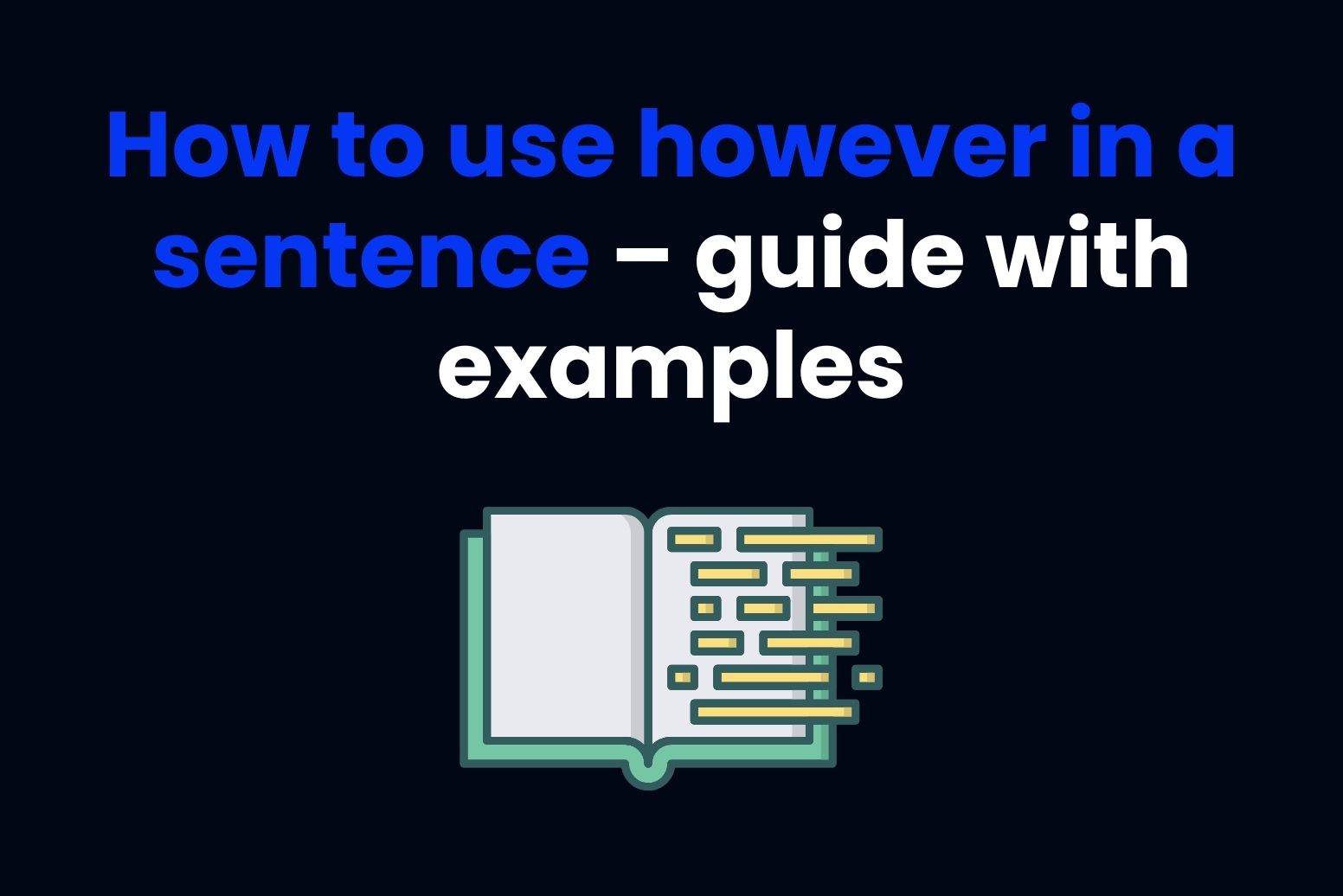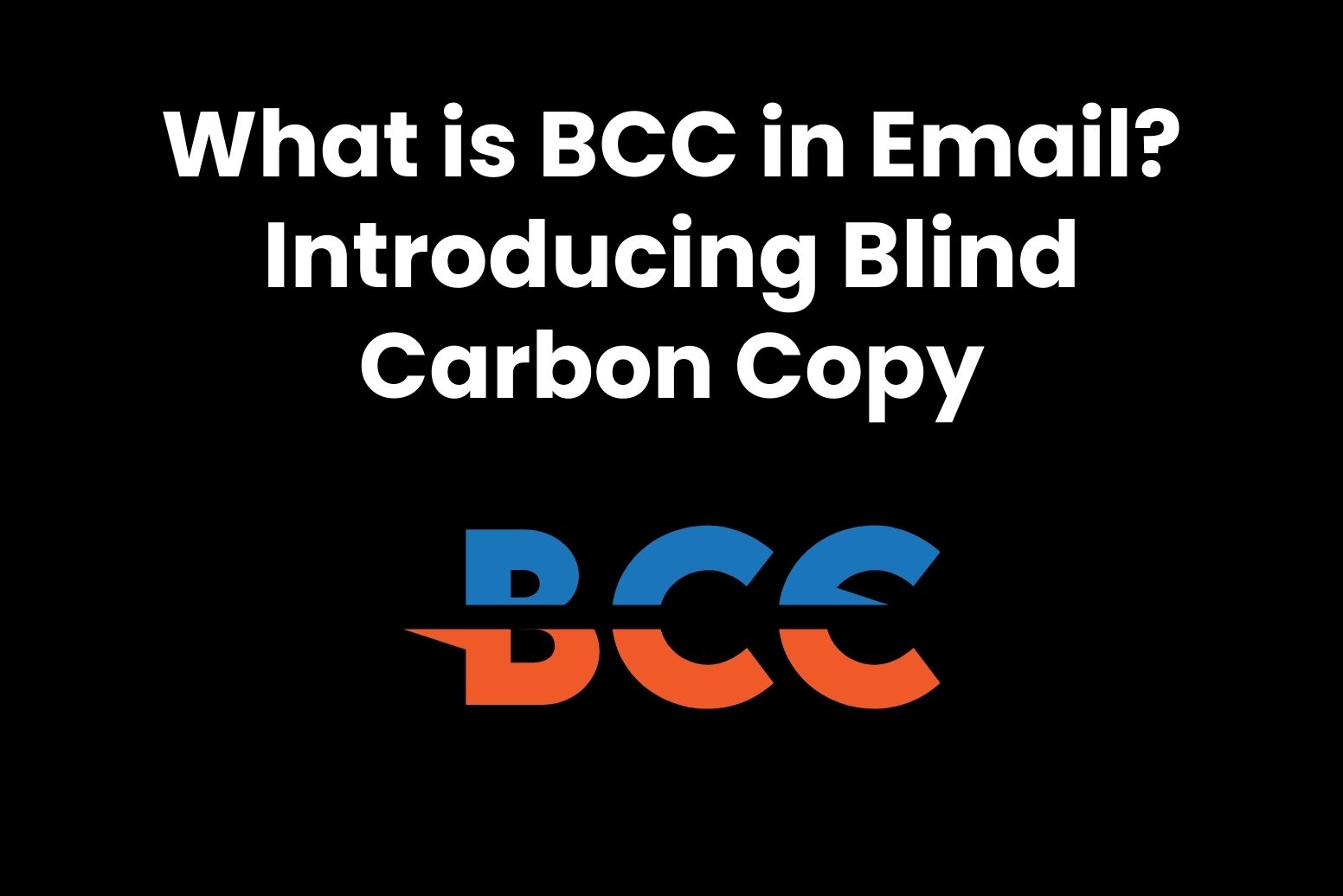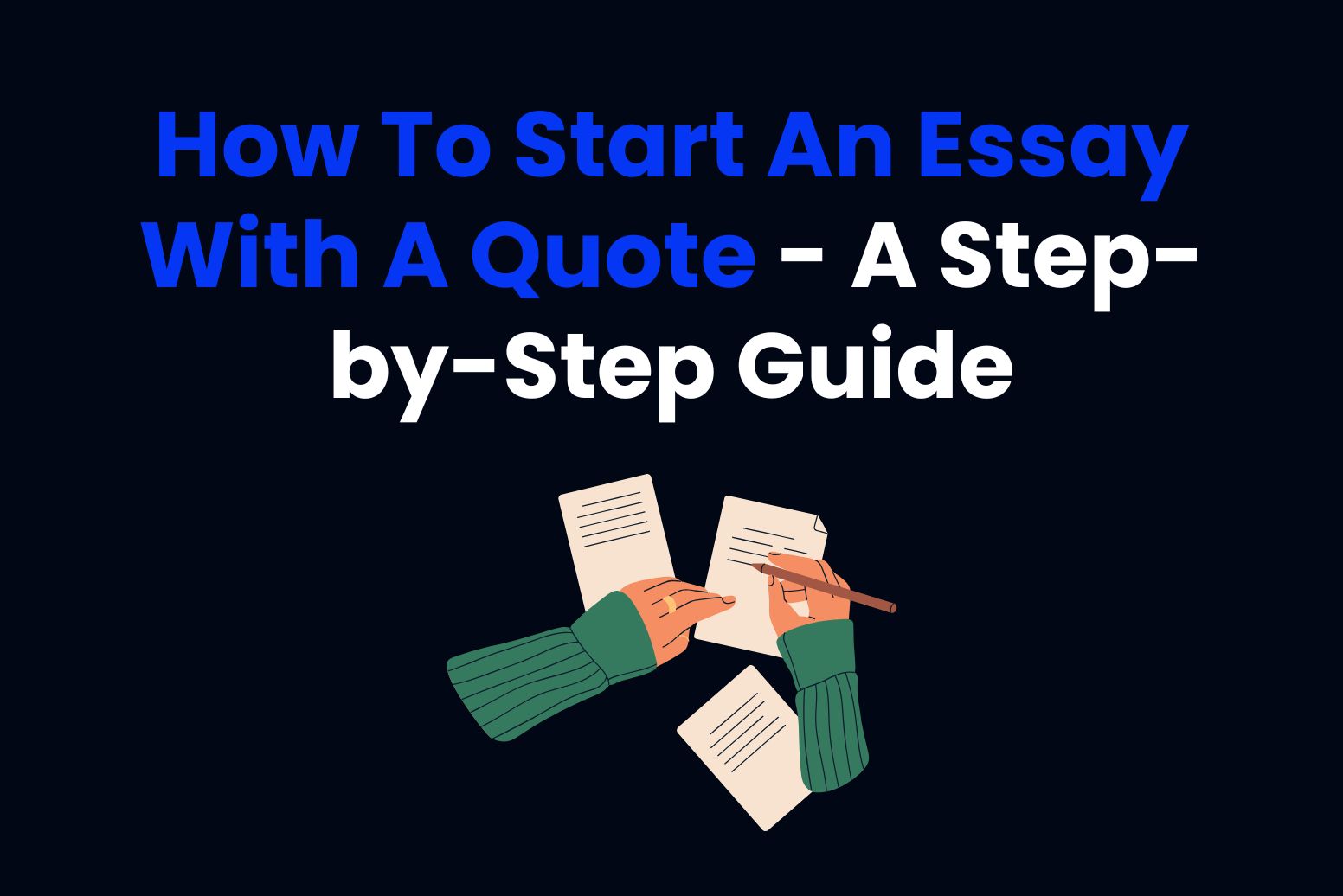Trust us; you are not alone if you have ever wondered how to use “however” in a sentence.
To all the writers and students alike, you know how using (or misusing words) can totally make and break your writing. And among some of these words which, as you may well know, are widely misunderstand is “however”.
With a placement and context that can link an idea, a contrast, or add emphasis, this versatile word makes for an incredibly helpful component of your writing arsenal. That’s why we’re going to show you the rules, give some real-life tips, and provide ample examples to help you in understanding “however” so your writing can be top-notch.
No matter if it’s an essay writing, the making of an email, or editing of a creative work, knowing its proper use will make all the difference. Ready for the next level of writing? Let’s get into it!

How to use “however”? And what does it actually mean
The word “however” is an excellent tool in the English language; it links ideas. Its major function is to introduce a contrast or exception to the preceding. But it can be used also for emphasizing and transitioning.
Determination of its meaning in a sentence is mainly based on how and where it is placed because such placement can subtly shift its effect.
At the beginning of sentences, “however” often works this magic of transition or contrast: “The weather forecast predicted sunshine. However, it rained all day”. It points out the unexpected contrast. Although, when you put it mid-sentence, it emphasizes the same contradiction but flows more logically: “The weather forecast predicted sunshine. However, it did rain all day”.
In some usages, “however” can also bring in some degree of flexibility, as in: “You may do the task however you like”. There, it means “in any way,” and the meaning shifts from indicating contrast to indicating choice.
Actually, it’s its flexibility that makes “however” a great tool of writing, but you need to use it just right, or clarity suffers: an inappropriately placed “however” can make your reader confused.
Therefore, placing it in its correct place according to its purpose within your sentence should be always a go-to.
Different ways on how to use “however”
The word “however” is quite versatile and can always help one improve their flow and even depth of writing. So, it could be used in connecting ideas, introducing contrast, or for emphasis, as the position or purpose may direct.
Now, let’s see the various ways to use “however” effectively in your sentences:
1. Starting a sentence
The most common usage of “however” is at the beginning of the sentence when one wants to introduce some sort of contrast or shift in ideas. It serves to signal a change in direction and often contradicts what was previously stated.
For instance:
“I thought I had enough time to complete the project. However, I underestimated how much work it would entail”.
Here, “however” sets up the contrast between what the speaker had expected and what has happened. And it draws attention to the unexpected turn of events, therefore, it can encourage the reader to continue for the explanation.
That positioning gives your writing a natural flow that is especially valuable when you want to emphasize something unexpected or contradictory. Just remember: “however” does need a full phrase to follow.
It’s not just an introductory word, but a bridge linking two independent clauses.
2. Within a sentence
Putting “however” in the middle of a sentence gives it a smoother flow between two phrases. It’s usually used when introducing contrast, but not as disruptively. But keep in mind that “however” is usually bracketed by commas.
You can see an example of that, here:
“The weather was perfect for a hike. The trail, however, was far more difficult than anticipated”.
Here, “however” serves to shift the tone from the positive description of the weather to the unexpected challenge of the trail. And the good thing is that it doesn’t disrupt the sentence but gives a clear contrast between the two thoughts.
This middle placement does allow you to show contrast without breaking the sentence in half. It’s perfect when you want to introduce a new idea naturally, in a less abrupt way.
3. At the end of a sentence
Even if you don’t see it as often as the other two, “however” at the end of a sentence can be a very strong way to emphasize the contrast. This structure usually follows after a semicolon or a full stop, thus carrying more weight.
For example:
“She was out to win the race; she lost, however”.
In this sentence, “however” enhances the unexpected outcome, entailing a more dramatic pause, which underlines the contrast. Also, it adds emphasis to make the opposing idea come out clearer to the reader.
Using “however” at the end of the sentence can be quite effective, in order to leave the reader with the final thought. Which, of course, often makes someone reflect further or gives a stronger impact.
4. To mean “no matter how” or “in any way”
Sometimes, “however” has nothing to do with indicating a contrast. It is to indicate flexibility or to introduce the idea of “in any way” or “no matter how.
For instance, you can see it here:
“You are free to complete the assignment however you prefer”.
In this sentence, this word means “in any manner or way”, giving the reader a sense of freedom or choice. In reality, it’s super useful when you want to put across the idea of multiple possible solutions or approaches to something.

How to use “however” as a transition word
That’s probably the most common use of this word. Because “however” is a catch-all word that performs one of these two crucial roles in your writing:
Making your writing flow while clearly showing contrasts or shifts in ideas.
When used correctly, it serves to transition the reader from one thought to another, particularly when you wish to emphasize an opposing idea or introduce an exception.
Also, it can be used in various parts of a sentence, as we told you before:
- At the beginning
- In the middle
- At the end
Each placement serving a slightly different purpose.
Normally, “however” is used at the beginning of a sentence for indicating some change in direction or contrast to a preceding statement.
For example, “The team achieved a lot. However, they still have a number of problems”. where “however” introduces an opposition and indicates that in spite of success, there are still some challenges.
It is used in the middle of a sentence and connects two ideas within one thought, adding flow and bringing out slight modification: for example, “The project was finished in time, however, the quality of execution was poor enough”. The word “however” makes this transition between two connected opposite statements smooth and even.
Finally, “however” can be used at the end of a sentence to really emphasize the contrast and make that second idea pop. Example: “She had everything planned perfectly. The outcome, was far from what she had expected, however”. In this placement, more focus is placed on the surprising or contrasting idea; thus, drawing the reader’s attention to it.
How to punctuate “however” in a sentence
Yes, we all know that you need on-point grammar to have a great text, right? Because if you don’t have that, what’s the point?
So, “however” (as many other words) can be tricky to use. That’s why, proper punctuation guides your reader through the sentence and makes the contrast or shift in ideas which “however” is introducing easy to understand.
Let’s consider some of the main rules and examples that will help you use “however” precisely.
1. Right at the beginning of a sentence
When “however” begins a sentence, a comma goes just after.
This punctuation indicates a strong break from the previous thought and signals that a contrast or change is about to come.
Example:
“The sun was shining brightly. However, the temperature of the air is surprisingly cold”.
See? In this sentence, the comma goes after “however” and it separates both contrasting ideas. And if there were no commas, this sentence would appear to be a run-on and the reader might miss how the two parts relate to each other.
2. Punctuating it in the middle of a sentence
Now, if “however” happens in the middle of a sentence, is always preceded by and followed by a semicolon and a comma accordingly.
Keep in mind that the semicolon separates two independent clauses here, while the comma after “however” helps already indicate that a contrast is appearing. For instance:
“The presentation was excellent; however, the attendees seemed disinterested”.
Here, the semicolon connects the two closely related ideas, and the comma after “however” ensures the shift is clear. This structure maintains the flow while emphasizing the contrast.
3. When you use it at the end of the sentence
You can also place this word just at the very end of your phrase or sentence. And this happens especially when you want to emphasize the contrasting point. So, when it’s like that, a comma goes right before.
For example:
“He worked tirelessly to finish the task. The results, however, were disappointing”.
In this case, the comma before “however” separates the main point from the contrast. Placing “however” at the end gives extra weight to the shift in the sentence, helping the reader focus on the surprising or unexpected conclusion.
4. Using commas when connecting two ideas in a complex sentence
In longer, more difficult sentences “however” can help to join multiple clauses. Therefore, when it appears in the middle of the sentence it goes both a semicolon and a comma just after. For example:
“The company’s profits increased last quarter; however, the outlook for this quarter remains uncertain”.
The semicolon here separates two independent clauses, and the comma after “however” maintains the flow of the sentence. This construction allows the reader to trace the connection between the two related but contrasting ideas without confusion

Still not sure about how to use however in a sentence? Improve your writing with Arvin AI!
You’re not alone—many people find it tricky at first. But once you know the punctuation, your writing will feel much smoother and clearer.
If you’re ready to improve your writing, Arvin AI can make a big difference. With this smart app, powered with GPT-4, you can quickly generate content and get instant grammar corrections, ensuring your sentences flow naturally.
Plus, it’s available on Google Play, the App Store, and the Chrome Web Store, so you can start refining your writing anytime, anywhere! What are you waiting to try it?
FAQ – How to use however in a sentence
How not to use however in a sentence?
Just avoid using “however” without proper punctuation or as a substitute for other conjunctions like “but” or “and”.
To understand this, here’s a wrong usage: “I wanted to go however it was late”. is incorrect.
The correct version would be: “I wanted to go; however, it was late”. Make sure “however” isn’t put incorrectly, as it could disrupt the flow of your sentence.
Can you use “however” to start a paragraph?
Yes, for sure! You can totally use “however” in this way to signal a shift in direction or to contrast the previous paragraph. Although, keep in mind that you need to follow it with a comma.
For example: “However, there are other factors to consider”. This helps establish a clear contrast between the two sections of your writing.
How to use however in a sentence to change the tone of a sentence?
Also, it’s 100% possible to employ this word to soften a statement or introduce a contrasting opinion. An example of this could be: “Yeah, I think the meeting went well. However, some improvements should be in for the future”. This way, it introduces a mild shift in tone, putting the perspective in balance.






